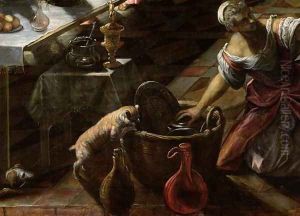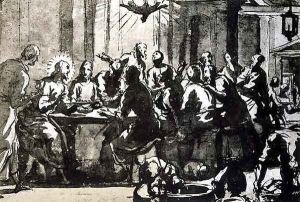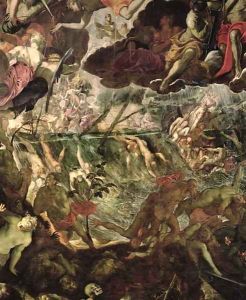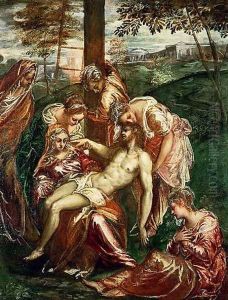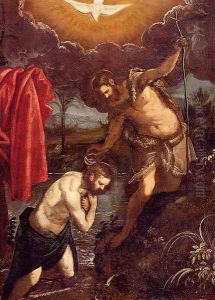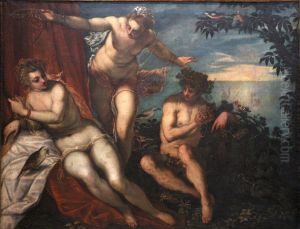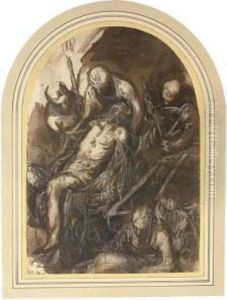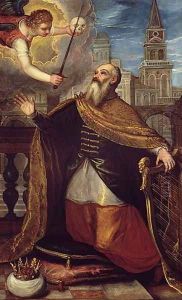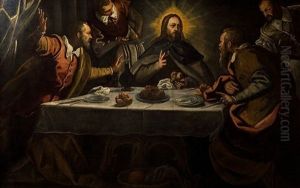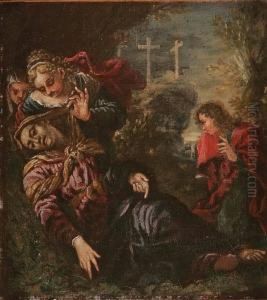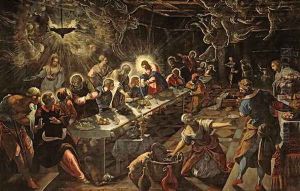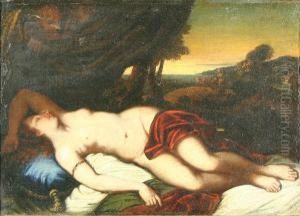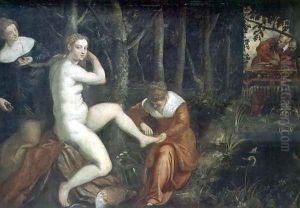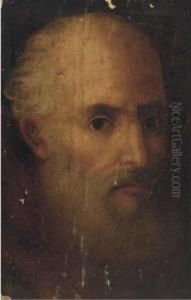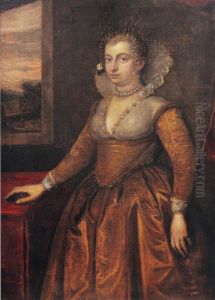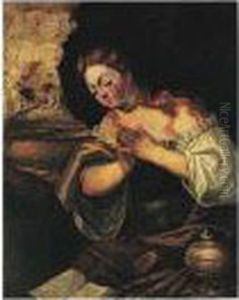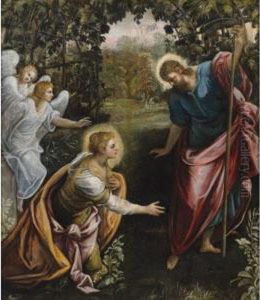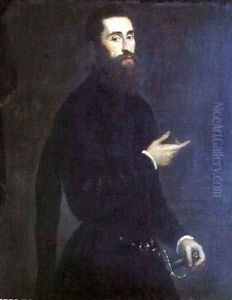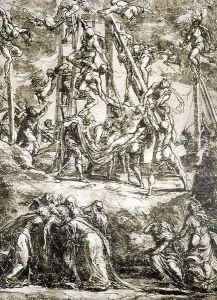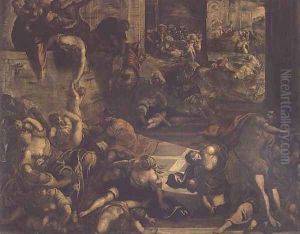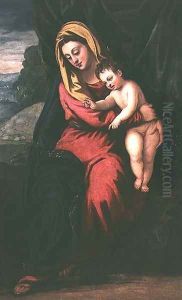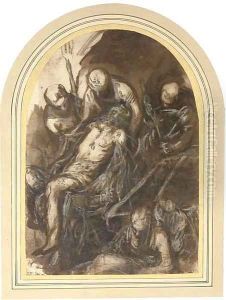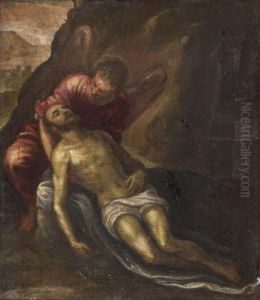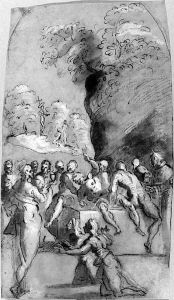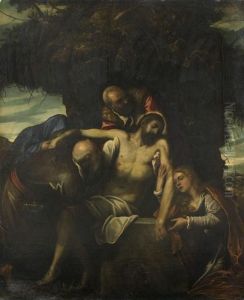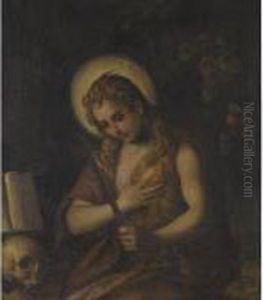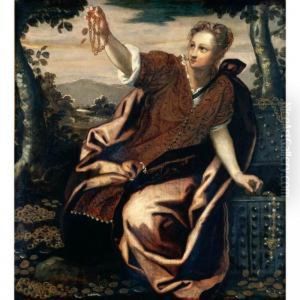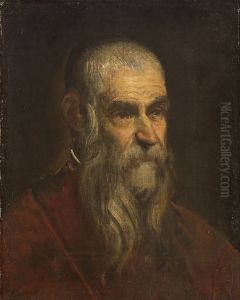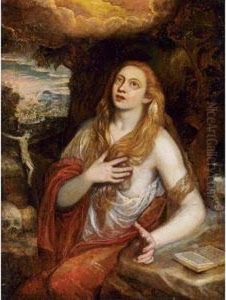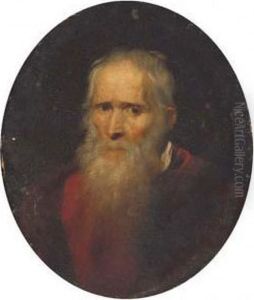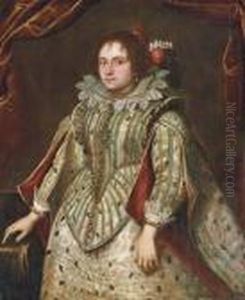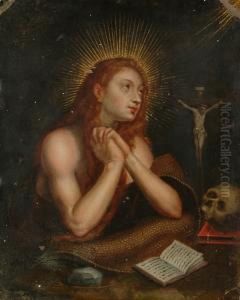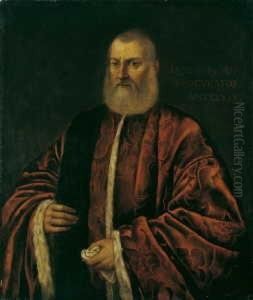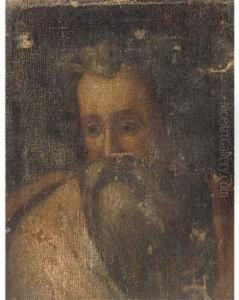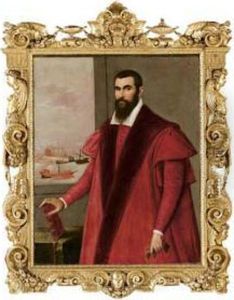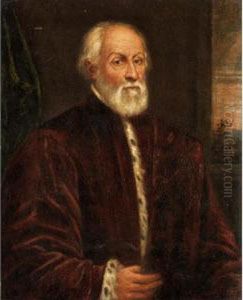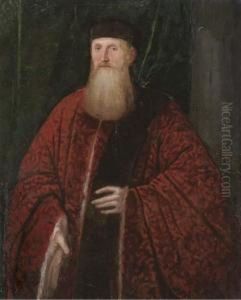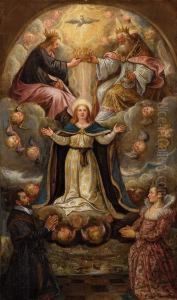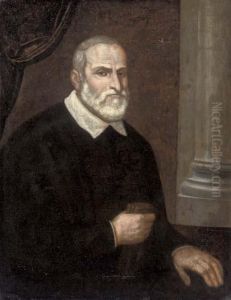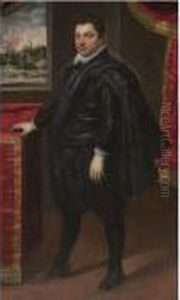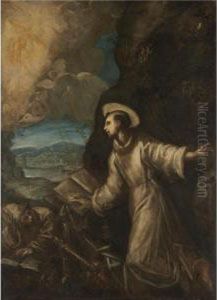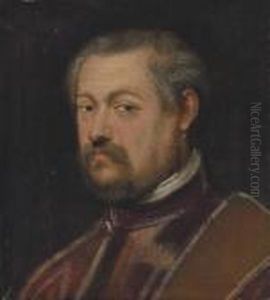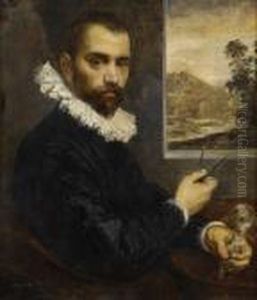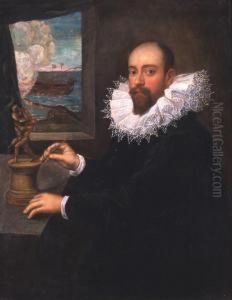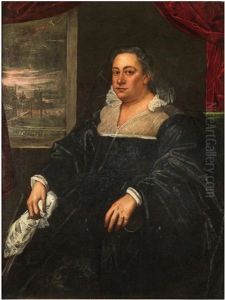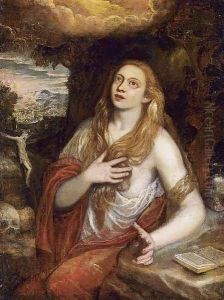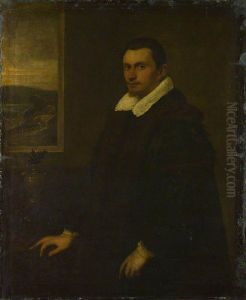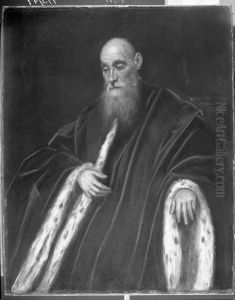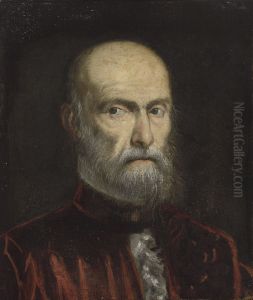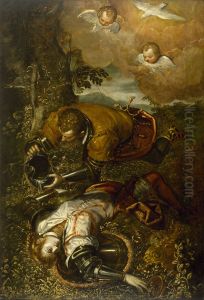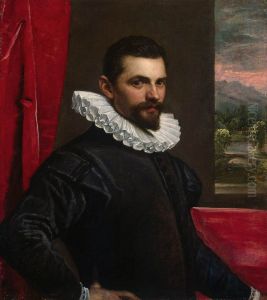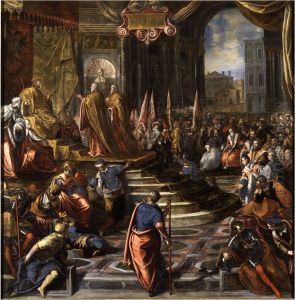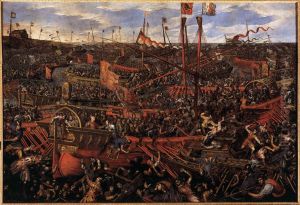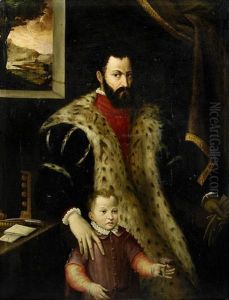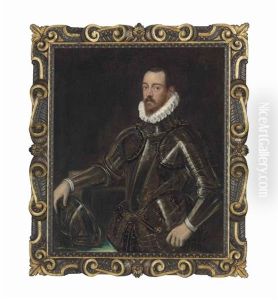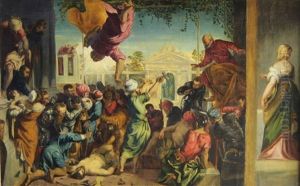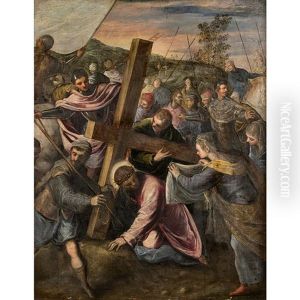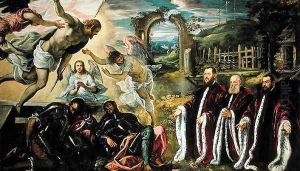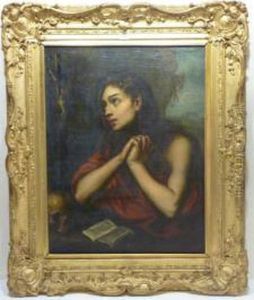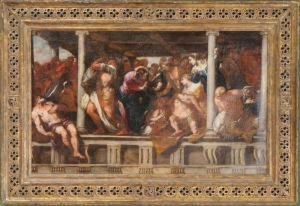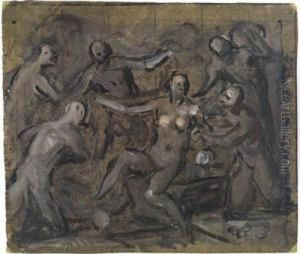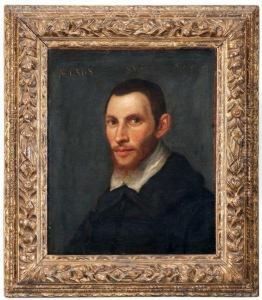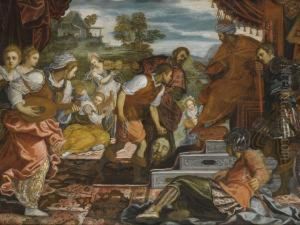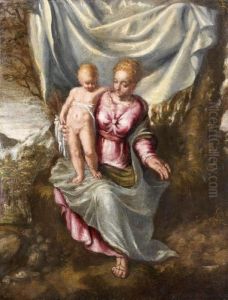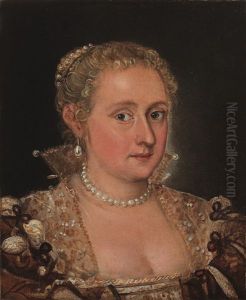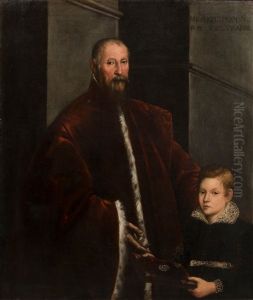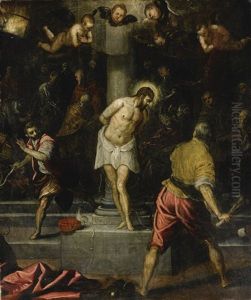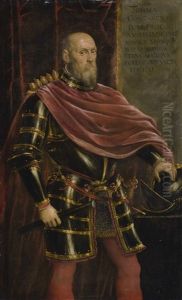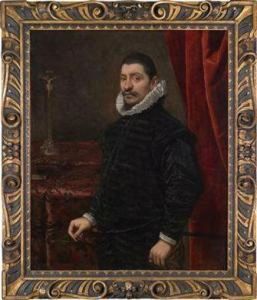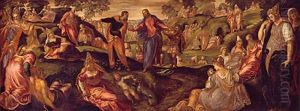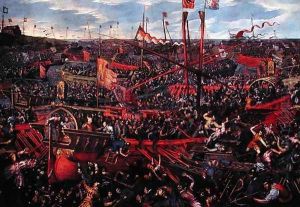Domenico Tintoretto Paintings
Domenico Tintoretto, also known as Domenico Robusti, was an Italian Renaissance painter born in Venice in 1560. He was the eldest son of the famous Venetian painter Jacopo Tintoretto. Growing up in a family deeply entrenched in the arts, Domenico was immersed in painting from a young age, training under the guidance of his father. This early exposure and mentorship played a crucial role in shaping his artistic style, which combined the robust energy and dramatic use of light characteristic of his father's work with his own unique sensibilities.
Domenico's career was largely conducted in the shadow of his father's towering legacy. Despite this, he managed to carve out his own niche in the Venetian art scene. He was known for his large-scale religious and mythological paintings, portraits, and, to a lesser extent, his work in fresco. His style reflected a blend of Mannerism and the emerging Baroque tendencies, characterized by dynamic compositions, rich color palettes, and a skilled use of chiaroscuro to create depth and volume.
After the death of his father in 1594, Domenico took over the family workshop. He worked on several significant commissions, many of which were for the Scuola Grande di San Rocco, a building that his father had previously adorned with a series of paintings. Domenico's work there, and in other Venetian churches and Scuole, helped to maintain the family's association with Venetian religious and charitable institutions.
Despite his accomplishments, Domenico's work was often criticized for lacking the innovative spark and the emotional intensity of his father's masterpieces. Nevertheless, his paintings were in demand, and he enjoyed the patronage of some of the leading families in Venice. His portrait work, in particular, was highly regarded for its detail and the psychological depth he brought to his depictions of sitters.
Domenico Tintoretto was not only a painter but also involved in the Venetian community as a member of the Fraglia dei Pittori, the painters' guild, and held various positions within the guild throughout his life. His contributions to the art of Venice are seen as a bridge between the High Renaissance and the Baroque period.
Domenico Tintoretto passed away in Venice in 1635. While his legacy may not shine as brightly as his father's, his work remains an important part of the Venetian artistic heritage, offering insights into the transition of styles and tastes during a pivotal period in the history of art.
